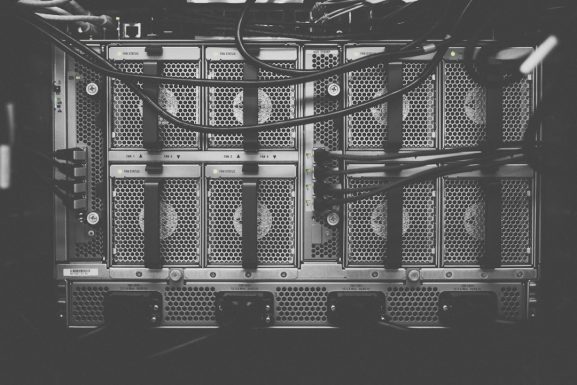In the ever-evolving world of artificial intelligence (AI), the hardware used to power complex algorithms is just as crucial as the software itself. Among the most prominent technologies used to accelerate AI processing are Graphics Processing Units (GPUs) and Tensor Processing Units (TPUs). Although both are designed to speed up computations, especially for deep learning tasks, they differ significantly in architecture, design, and use cases. Understanding these differences can help developers and organizations make informed decisions based on performance, scalability, and cost considerations.
What is a GPU?
All Heading
A Graphics Processing Unit (GPU) is a specialized processor originally designed to render images and graphics. Over time, its highly parallel structure made it ideal for computational tasks that require multiple simultaneous operations, such as training deep learning models. Popular GPU manufacturers like NVIDIA have made considerable strides in optimizing GPUs for machine learning frameworks, making them a staple in AI development.
GPUs excel particularly in matrix and vector operations, which are foundational in neural networks. Their general-purpose nature allows them to support a wide array of deep learning frameworks such as TensorFlow, PyTorch, and Keras.
What is a TPU?
A Tensor Processing Unit (TPU) is an application-specific integrated circuit (ASIC) developed by Google explicitly for AI processing tasks. Unlike GPUs, TPUs are not general-purpose processors. They are designed to perform matrix operations with extreme precision and speed, focusing solely on AI workloads, especially those built on TensorFlow.
TPUs are optimized for both training and inference of deep learning models but are particularly powerful in inference tasks where performance and latency are more critical.
Architectural Differences
The core difference between GPUs and TPUs lies in their architecture:
- GPUs have thousands of cores designed for parallel processing. This makes them suitable for various tasks, including rendering, simulation, and general computing.
- TPUs are built with the specific instruction set needed for matrix multiplication, the core operation in neural network training and inference. This specialization allows them to deliver higher performance per watt for machine learning tasks.
TPUs use a structure called a systolic array, a grid of interconnected processing elements that allow for efficient data reuse and minimal memory bottlenecks, which makes them highly efficient in executing tensor operations.
Performance in AI Workloads
When it comes to AI model training, both TPUs and GPUs offer significant acceleration over conventional CPUs. However, the performance outcome often depends on the architecture of the AI model, dataset size, and the framework used.
- Training: GPUs are versatile and support parallelism very well. They are highly suitable for both small and large-scale training tasks.
- Inference: TPUs outperform GPUs in many inference-based scenarios, especially when used within the Google Cloud environment. Their architecture and optimization allow them to reduce inference time significantly.

Compatibility and Ecosystem
Another factor to consider is the compatibility with machine learning ecosystems:
- GPUs are supported by almost every deep learning framework, offering end-to-end compatibility regardless of the development environment or platform.
- TPUs, on the other hand, are tightly integrated with Google’s TensorFlow platform. While this makes them incredibly efficient for TensorFlow users, it limits their flexibility for users of other frameworks.
Moreover, because GPUs have been in the market longer, they have a more extensive community, better documentation, and broader hardware availability. TPUs are primarily available through Google Cloud, although some edge versions (like Coral TPUs) are available for developer use on a smaller scale.
Scalability and Cost
Scalability is a key concern for enterprises building large machine learning pipelines. Here’s how they compare:
- GPUs can scale well in clusters and support hybrid workloads beyond AI, giving more flexibility in resource allocation.
- TPUs are designed to scale rapidly in Google’s cloud environment. TPU v2 and v3 pods offer large-scale compute power, suitable for massive models like GPT and BERT.
In terms of cost, GPUs are generally more affordable for moderate workloads and are available through various providers. TPUs might offer better performance-per-dollar ratios for TensorFlow-specific tasks but may incur higher costs due to their specialized nature and cloud-only availability.
Use Cases
Here are some typical use cases for both TPUs and GPUs in the real world:
GPU Use Cases:
- General-purpose AI and machine learning tasks
- Training large convolutional neural networks (CNNs)
- Real-time video and image processing
- Scientific simulations and graphic rendering
TPU Use Cases:
- High-performance AI model inference at scale
- Training and deploying TensorFlow models in Google Cloud
- Applications where energy efficiency and low latency are critical

Conclusion
Both GPUs and TPUs serve crucial roles in AI processing but are tailored for different needs and ecosystems. GPUs offer flexibility, wide framework compatibility, and strong performance in training and inference. TPUs, engineered specifically for TensorFlow, provide exceptional performance and efficiency for large-scale AI applications, especially in Google’s infrastructure.
The choice between TPU and GPU will ultimately depend on project requirements, budget constraints, target platforms, and framework preferences. Understanding the strengths of each processor type allows data scientists and AI engineers to build more effective and scalable AI solutions.
FAQ: TPU vs GPU in AI Processing
- Q: Are TPUs faster than GPUs?
- A: In many TensorFlow-based inference and training scenarios, TPUs can outperform GPUs. However, the actual performance depends on the model architecture and specific task.
- Q: Can I use TPUs outside of Google Cloud?
- A: TPUs are primarily available through Google Cloud. However, Google also offers Edge TPU versions (e.g., Coral TPUs) for localized, on-device processing.
- Q: Which is better for beginners in AI?
- A: GPUs may be better for beginners due to broader framework compatibility, community support, and lower cost of entry.
- Q: Do all machine learning frameworks support TPUs?
- A: TPUs are optimized for TensorFlow. Other frameworks may not support TPUs natively or with full functionality.
- Q: Which is more energy-efficient, a GPU or a TPU?
- A: TPUs are generally more power-efficient for AI workloads because of their tailored design and reduced overhead.












Recent Comments